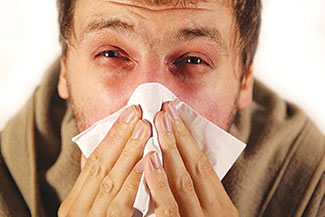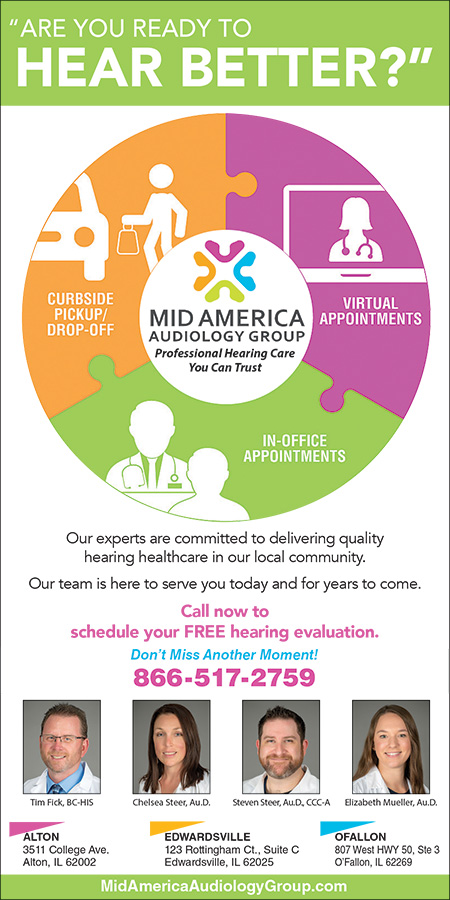Allergies are the sixth leading cause of chronic illness
 Runny nose, itchy eyes, brain-rattling sneezes… must be spring! In many parts of the U.S., spring allergy season begins in February and can last until early summer.
Runny nose, itchy eyes, brain-rattling sneezes… must be spring! In many parts of the U.S., spring allergy season begins in February and can last until early summer.
Cleveland Clinic allergy and clinical immunology specialists Frank J. Eidelman, MD, and DeVon Preston, MD, explain what can make spring allergies so brutal — and how you can manage all that sneezing, wheezing, itching and sniffling.
Allergic rhinitis (hay fever) and nasal allergies can significantly affect your quality of life. In fact, the American College of Allergy, Asthma and Immunology reports that allergies are the sixth leading cause of chronic illness in the United States.
“They can really make you miserable. Your eyes get itchy and swollen, your nose is congested, you sneeze a lot and your lungs can become irritated,” Dr. Eidelman says.
Here’s why:
- Everything’s in bloom. “When we talk about spring allergies, we’re talking about tree pollen,” Dr. Eidelman notes. Trees are, of course, blooming in the spring, which means people with tree pollen allergies are especially miserable this time of year.
- Your geography matters. Temperate climates see three basic pollen seasons: spring (tree pollen), summer (grass pollen) and fall (weed pollen and mold). But it’s not unusual for those seasons to overlap. That’s a double whammy for folks who are allergic to both tree and grass pollens, according to Dr. Preston.
- Weather is a factor. Sometimes, winter rolls gently into spring. Sometimes it doesn’t. Dr. Preston explains, “When you don’t have consistent temperatures, pollination halts and restarts. So, a lot of allergens compound on each other. When we have drier or windier weather, all the allergens are being carried around,” he adds.
- Blame climate change, too. If you feel like your spring allergies have gotten worse, you’re not imagining it. “With climate change, spring pollination has gotten worse in the last 10 to 20 years,” Dr. Eidelman notes. “As the seasons get hotter, we’re seeing more pollen, longer and more intense pollination seasons. This seems to be a worldwide trend.”
SPRING ALLERGY SYMPTOMS
Some of the most common symptoms of spring allergies are:
- Head congestion. Think stuffy or runny nose, sinus pain and headaches.
- Coughing and — in people with allergic asthma — wheezing or shortness of breath.
- Red, itchy, swollen or watery eyes.
- Dry, scratchy or sore throat with postnasal drip. You may even experience pain when you swallow.
- Itchy skin. If you come into direct contact with an allergen, you could even experience contact dermatitis, which can manifest as an itchy rash, blisters or swelling.
- Fatigue and brain fog.
GET AHEAD OF ALLERGY SEASON
Dr. Eidelman recommends starting a topical nasal steroid spray one or two weeks before the start of allergy season. These sprays can prevent inflammation in your nose and block some of your worst symptoms before they begin. Once the pollen starts flying, use your nasal steroid spray daily until the season ends.
Dr. Eidelman and Dr. Preston say that many of the best seasonal allergy medications are now available over the counter. They fall into three main categories: antihistamines, nasal sprays and decongestants.
If you aren’t getting the relief you need from those options – or you’re trying to reduce your reliance on medications, it may be time to talk to a doctor about allergy shots.
Here are all four options :
ANTIHISTAMINES
The first category of medications you can use to relieve your spring allergies is antihistamines, which fall into two basic groups of their own:
- First-generation antihistamines: These older medications, like Benadryl (diphenhydramine), cause drowsiness and slow reaction times, which can impact your day-to-day work and your ability to operate machinery (like your car). “You might think the medication isn’t affecting you,” Dr. Eidelman warns, “but you’re probably not functioning as well as you think you are.”
- Second-generation antihistamines: Newer medications like Claritin (loratadine), Allegra (fexofenadine) and Zyrtec (cetirizine) are less sedating or non-sedating. “They’re the preferred medications for basic symptoms like itching, sneezing or runny nose,” Dr. Eidelman advises.
NASAL SPRAYS
If you’re experiencing nasal congestion, postnasal drip and sinus pressure, antihistamines aren’t particularly effective, Dr. Eidelman says. But you can add a topical nasal steroid like Flonase (fluticasone), Rhinocort (budesonide), Nasonex (mometasone) or Nasacort (triamcinolone).
These nasal sprays are non-sedating and don’t have side effects, but you have to use them every day for them to work.
DECONGESTANTS
Another option for treating nasal congestion, postnasal drip and sinus pressure is to add Sudafed (pseudoephedrine) to your daily antihistamine. Pseudoephedrine is a decongestant, meaning it can help clear your congestion.
Pseudoephedrine, which is also found in combo medications like Allegra-D, Claritin-D and Zyrtec-D, can cause serious side effects, like high blood pressure, heart palpitations and even an enlarged prostate.
“Overall, I don’t recommend it for people with heart problems, and I wouldn’t recommend that people over 40 take it regularly,” Dr. Eidelman states. Stick to a topical nasal steroid instead.
ALLERGY SHOTS
If over-the-counter medicines and nasal sprays don’t seem to work, you might want to consider allergy shots, also known as immunotherapy. “Allergy immunotherapy is the only treatment that has the potential to cure allergic rhinitis,” Dr. Eidelman says.
They can lessen your sensitivity to pollen and other things you’re allergic to. If you’re allergic to tree pollen, for example, you would get an allergy shot made out of tree pollen protein.


